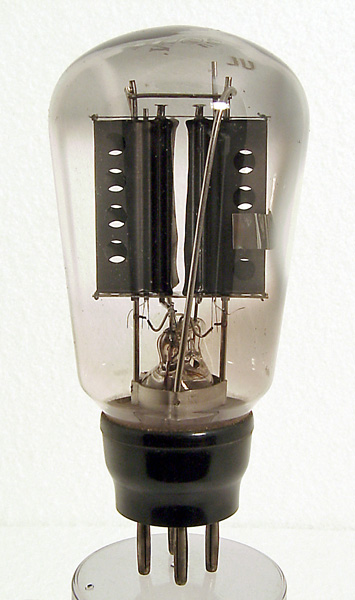|

MOV were pioneers in introducing HT rectifiers for domestic AC sets. However, all their early offerings were directly heated.
When indirectly heated output valves such as the MPT4 were introduced during the early 1930s this caused a technical problem because, when a set was switched on from cold, the directly-heated rectifier would warm up several seconds before the other valves in the set were warm enough to consume the HT current provided by the rectifier. This meant that the HT voltage would climb briefly to its off-load level, typically at least 100V higher than its normal on-load running level. This stressed not only HT capacitors and insulation throughout the set but also stressed the other valves in ways which could shorten their lives.
Something had to be done. Mazda led the way. By 1930 they had a commanding technical lead in respect of indirectly heated cathodes with robust oxide coatings. They therefore introduced a series of indirectly-heated HT rectifiers (See UU3) in which the heater-cathode insulation was deliberately thickened so that the rectifier warmed up slightly more slowly than the other valves. The HT was therefore never run off load and the problem was solved.
But not for MOV! They did not at first have the technology to copy Mazda successfully so they persevered with AC directly-heated output valves such as the PX4, PX25 and PT4 for two or three years while Mazda were busy developing really good indirectly heated pentodes. With hindsight we can see that MOV's investment in PX4s eventually paid off handsomely, but they never did catch up on pentodes!
|